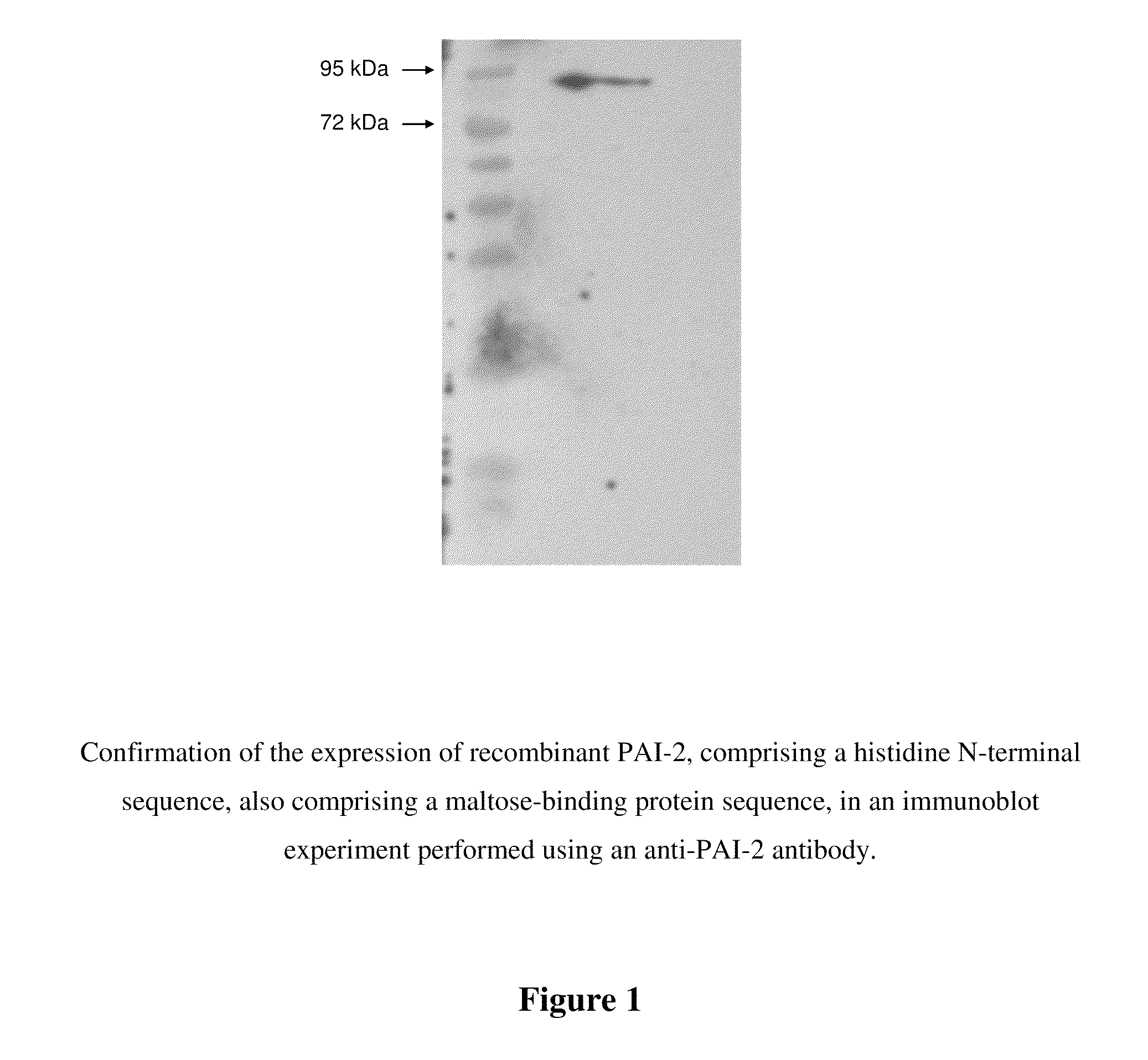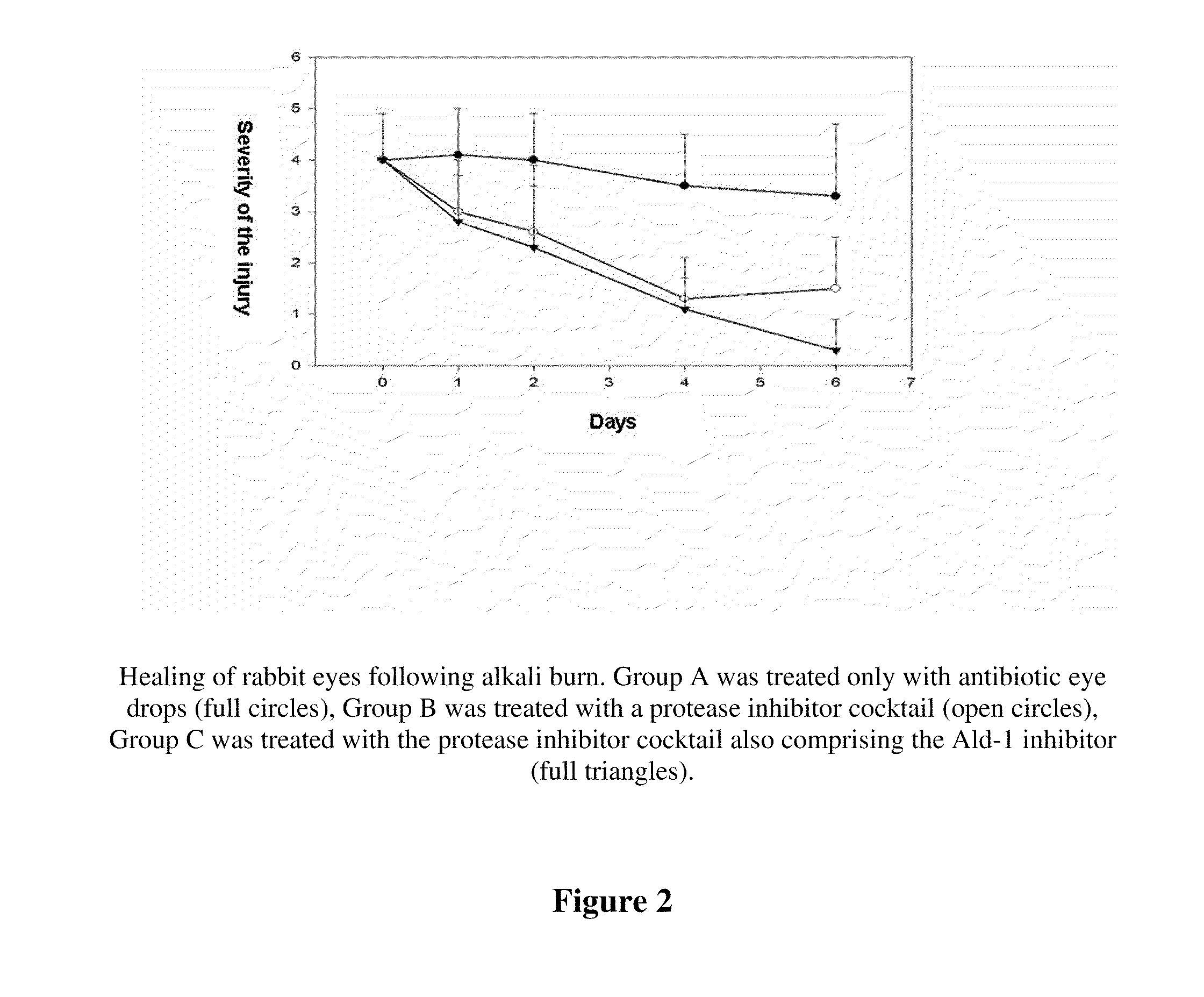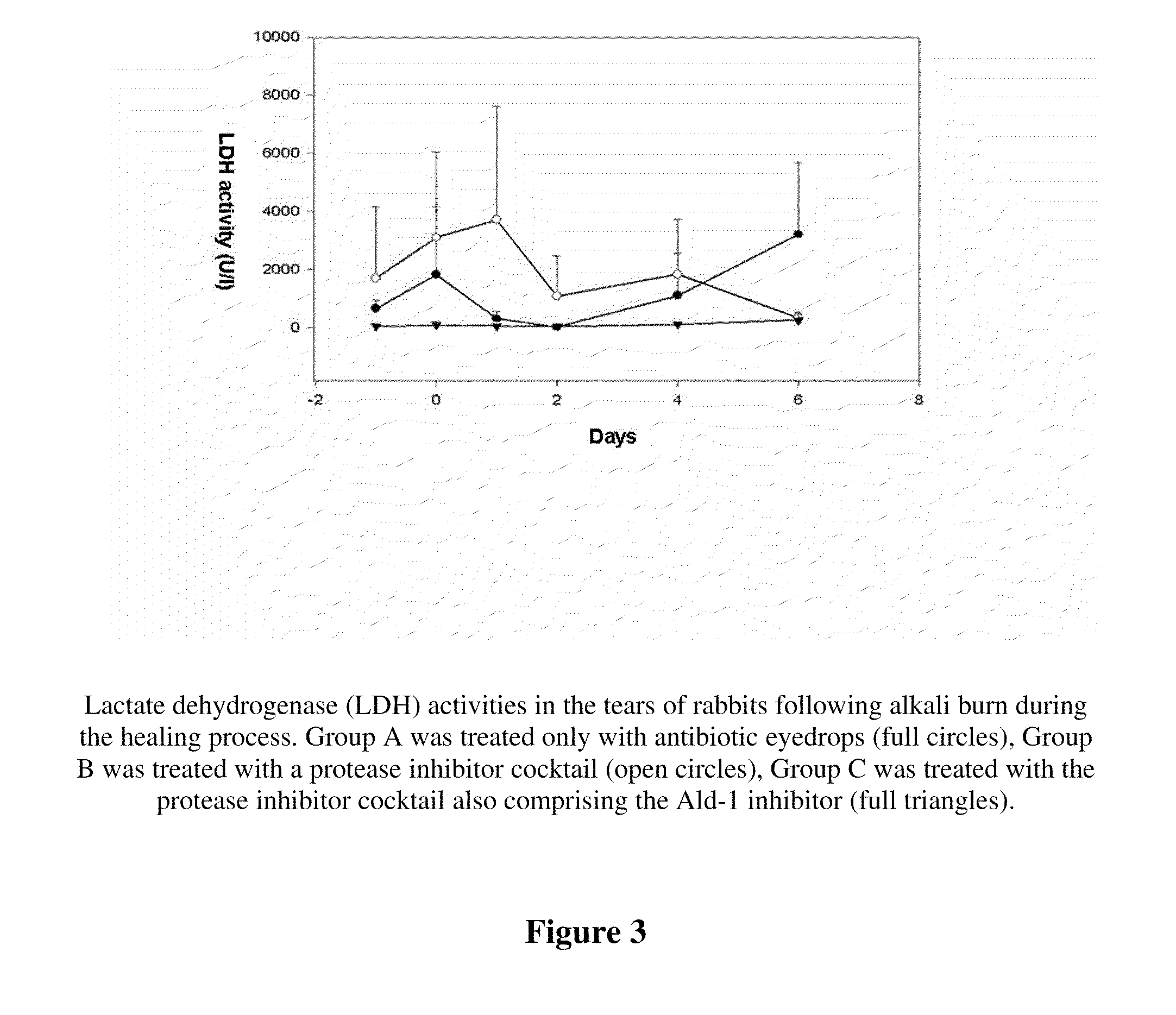Use of Urokinase Type Plasminogen Activator Inhibitors for the Treatment of Corneal Disorders
a technology of plasminogen activator inhibitor and urokinase type, which is applied in the preparation of animal/human proteins, tripeptide ingredients, peptide preparation methods, etc., can solve the problems of no available solution, pharmaceutical composition or therapeutic protocol disclosed, and achieve the effect of effective treatment, prevention and treatment of the development of pathological changes
- Summary
- Abstract
- Description
- Claims
- Application Information
AI Technical Summary
Benefits of technology
Problems solved by technology
Method used
Image
Examples
example 1
Production of Recombinant PAI-2 Fusion Protein
[0036]Though PAI-1 is at least as effective as PAI-2 in blocking uPA, PAI-1 is metastable and easily takes an inactive conformation (Mottonen et al. 1992), that is unfavorable from the point of therapeutic use. The other advantage of PAI-2 is that its physiological, intracellular form does not become glycosylated, therefore the bacterially expressed protein is totally identical to the intracellular protein expressed by eukaryotic cells.
[0037]The protein producing strategy chosen by us has numerous advantages, and our disclosure is the first of producing, with such a method, recombinant protein for the purpose of use in form of eye drops. The essence of the method is that it also comprises the use of double promoting-protein sequences. On the N-terminal of the expressed protein there is a hexahistidine sequence to help nickel-chelate chromatographic purification (Ni-NTA), which is followed by a maltose-binding sequence (MBP). Hexahistidin...
example 2
Activity of Recombinant PAI-2 Fusion Protein
[0039]The urokinase inhibiting activity of the protein, produced by the above described method, was tested by a microtiter plate method in the following way: 140 μl buffer (100 mM Tris-HCl, 300 mM NaCl, pH=8.5), 20 μl 3 mM piro-Glu-Gly-Arg-pNA chromogenic substrate (S-2444, Chromogenix), 20 μl 700 IU / ml uPA (Choy), the activity was calibrated with S-2444 substrate in a previously described way (Tözsér and Berta, 1990), to this mixture 20 μl purified PAI-2 fusion protein (or distilled water as control) was added. The reaction was incubated for 20 minutes on 37° C., then the yellowing of the reaction mixture was checked on 405 nm with Labsystems Multiskan MS microplate reader. With this method the urokinase blocking activity of the PAI-2, prepared by us, was found to be 200 IU / ml.
[0040]The activity of the recombinant PAI-2 fusion protein was also tested on the culture of CV-40-transformed corneal epithelial cells. The cells were spread in mi...
example 3
The Use of PAI-2 Fusion Protein Containing Eye Drops in the Case of Experimentally Induced Chemical Corneal Injury / Ulceration
[0041]Widely accepted model of corneal ulceration is the follow up of chemical burn created by Na-hydroxide in rabbit eyes (Berman et al. 1980, Wang et al., Yan et al. 2004).
[0042]To test the PAI-2 fusion protein containing eye drop, rabbit experiments were performed to model chemical burns and consecutive corneal ulceration. New Zealand white rabbits (of 3-4 kg weight) were used. Chemical burn was induced by touching the cornea for 20 sec with 6 mm diameter filter paper disc, soaked in 0.5 M NaOH. To avoid pain 1% Tetracain eye drops were used. The rabbits did not show any sign of pain during the treatment. After the injury, the eyes were washed with physiological saline, to eliminate the remaining alkaline, which was tested by Lacmus paper, then the treatment of both eyes was performed in the following manner. The right (control) eye of the animals were trea...
PUM
| Property | Measurement | Unit |
|---|---|---|
| concentration | aaaaa | aaaaa |
| weight | aaaaa | aaaaa |
| diameter | aaaaa | aaaaa |
Abstract
Description
Claims
Application Information
 Login to View More
Login to View More - R&D
- Intellectual Property
- Life Sciences
- Materials
- Tech Scout
- Unparalleled Data Quality
- Higher Quality Content
- 60% Fewer Hallucinations
Browse by: Latest US Patents, China's latest patents, Technical Efficacy Thesaurus, Application Domain, Technology Topic, Popular Technical Reports.
© 2025 PatSnap. All rights reserved.Legal|Privacy policy|Modern Slavery Act Transparency Statement|Sitemap|About US| Contact US: help@patsnap.com



